|
This month, we’re printing the second half of the book recommendations Jen and Sally made at Night In/Morning In in January. Several of the books were Indies Introduce books. Indies Introduce is a program of the American Booksellers Association. Twice a year, a panel of booksellers selects ten books by debut authors to recommend. Jen was a panelist for young adult books a few years ago; Sally is currently on a panel selecting books for adults.
|
|
 Jen Jen |
 |

|
 |
The Museum of Modern Love
Heather Rose
In 2010, performance artist Marina Abramoviac launched a show at the Museum of Modern Art in New York City. It was called The Artist is Present. Marina would arrive in the morning, sit in a chair, and anyone who wanted to could sit in the chair across from her and keep eye contact as long as s/he wanted. Marina thought that probably she would often be sitting across from an empty chair, but the show was a huge success, drawing hundreds of visitors. People who wanted to sit across from Marina would wait for hours in line for a chance. [Jen showed a book which was a photo documentary of all the visitors that sat across from the artist and how long each stayed.] All kinds of people were pictured, many with tears running down their faces and the artist herself was photographed with tears sliding down her face. Sitting across from a stranger and maintaining eye contact was very moving—for the visitors, the artist, and even for bystanders. This inspired author Heather Rose to write a novel about fictionalized visitors to the show. She obtained permission from Marina Abramoviac and several others to include them, as themselves, in her novel. I wasn’t too sure about this at first—I mean, I’m a creative and I spend a lot of time at the theater, but performance art? Eh….often not my thing – and people just staring at each other? It turned out to be an incredibly powerful backdrop for a novel. The Artist is Present lasted for 75 days and over the course of those 75 days, the reader becomes acquainted with some of the visitors to the exhibit and the transformations that occurred in their lives.
|
| |
|
 |
|
Spineless
Juli Berwald
Often we humans divide ourselves into 3 nature groups—trees, water, or plains. I’m a trees girl all the way, which means I’m living in the perfect place. I like water and the plains are OK, but really, I’m all for the trees. That being said, I was completely captivated by Juli Berwald’s lifelong fascination with sea life and especially, jellyfish. Yes, jellyfish. Those weird, blobby, eyeless, things that float in the ocean and can sting. While Juli’s book Spineless is in fact a memoir that includes other people—you know, husband and kids, those kinds of people, it’s all about the jellyfish. And it’s really interesting—even to a tree hugger like me. |
| |
|
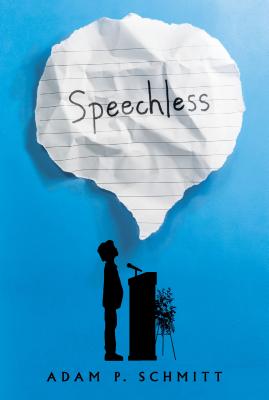 |
|
Speechless
Adam Schmitt
Speechless is a middle grade book. We encourage book groups to occasionally select juvenile literature to discuss and this one would be perfect. Jimmy is a 13-year-old boy whose cousin Patrick has just died. Jimmy is supposed to say a few words at Patrick’s memorial service. This might be daunting for any 13-year-old, but it’s especially hard for Jimmy because—well, he didn’t like Patrick. At all. Jimmy’s childhood is filled with memories of birthdays and holidays and family gatherings that Patrick ruined. The thing I especially liked about this book was that I felt the author really got the mind of a 13-year-old. As someone who spends a fair amount of time with 7th to 12th graders, the teenage characters were very authentic. It’s no surprise that the author is a middle school teacher. The pacing of this book is so incredibly well done, including bits about Patrick and all the awfulness he perceives in his life. This would be a great book to share with a young person in your life. Anyone who reads this book has the perfect set up for starting a conversation about it, “What would YOU say?” Aside from that, there is a great deal to talk about with family and school dynamics and relationships. Speechless was an Indies Introduce title. |
| |
|
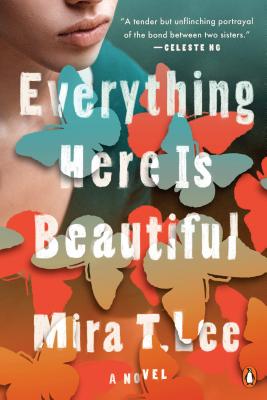 |
|
Everything Here Is Beautiful
Mira T. Lee
This is one of the richest novels I’ve read. It begins with sisters Miranda and Lucia. Miranda was born in China. Their mother was pregnant with Lucia when they moved to the United States after the death of the girls’ father in China. As is so often the case, the older daughter Miranda is more responsible than her younger sister, but Lucia has more to struggle with. She suffers from mental illness – maybe schizophrenia, maybe bipolar disorder, maybe something in between or a mix, it’s never known for sure. The novel follows the life of Lucia. As a young woman, she attends NYU, then marries a much older man named Yonah who immigrated from Israel. Together they run a store. Then unexpectedly, Lucia leaves Yonah for a much younger man, Manuel or Manny, a Latino immigrant. Manny is not a legal U.S. citizen and lives in a house with so-called cousins. Lucia becomes pregnant. In the meantime, Miranda has fallen in love and married a man who lives in Switzerland. For the rest of the novel, she struggles to keep Lucia healthy from faraway. While this book is filled with international characters and places, it is really Lucia’s mental illness that takes center stage. Sometimes she takes her medication and is able to participate normally in life, despite the side effects of medication, and sometimes she battles mightily with two imagined serpents that live and argue in her mind. I like this book because the author is patient with the characters, and they evolve in ways that feel very real. A character’s resolve one day is doubted the next, just the way we all experience life. It’s also a novel that covers a significant amount of time, which I like. We get to watch Manny and Lucia’s daughter, Esperanza grow up. There’s so much potential for great discussion in this book. This book was selected as an Indies Introduce book several years ago. |
| |
|
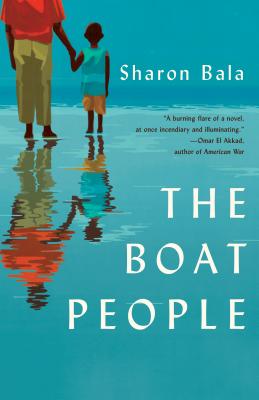 |
|
Boat People
Sharon Bala
We’re often asked how we choose what to recommend at Night In/Morning In. In the case of this title, I was receiving books at the store one day and this one caught my eye. And even though I had a ton of work to do, I read the back of the back. Ooooh, it sounded REALLY good. In 2009, 500 Sri Lankans seeking to escape the civil war in their country got on a cargo ship heading for British Columbia. Once there, they were all detained and had to work through the arduous process of whether or not Canada would allow them to stay. The story is told from a number of perspectives – Mahindan, one of the refugees who came on the boat with his 6-year old son, a young law student who works on behalf of the refugees, and a newly appointed adjudicator whose decisions determine whether or not each refugee should stay. If she rejects a refugee’s claim, the refugee is deported and may not return. Once deported, death is almost guaranteed upon the deported person’s return to his/her country and not just death, but a slow death by torture. If the adjudicator mistakenly accepts the claim of someone who is actually a terrorist, then her country is in danger. No matter your political position, this book will remind you that all of the people involved, from refugees to government workers, are human beings with fears, needs, and desires. Reading this made me realize, maybe for the first time, what the potential danger of situations like this can be. |
| |
|
|
|
|
|
 Sally Sally |
|

|
 |
Scribe
Alyson Hagy
Scribe was published by Graywolf Press, one of the outstanding small publishers located in Minnesota. We’re so lucky to live in such a literate state! It’s a nonprofit independent literary publisher specializing in poetry, fiction, nonfiction, and work in translation. Here’s part of their mission statement: “We champion outstanding writers at all stages of their careers to ensure that adventurous readers can find underrepresented and diverse voices in a crowded marketplace. We believe works of literature nourish the reader’s spirit and enrich the broader culture, and that they must be supported.” Graywolf Press is truly a Minnesota treasure.
So, adventurous readers, the Graywolf book we selected for Night In/Morning In is Scribe.
Scribe is set in the future in Appalachia, and it’s steeped in Appalachian legends and folk tales. Sometime before the opening of the book, a brutal civil war occurred, following by wildly contagious fevers. Abandoned homes and farms are found throughout the countryside. The economy is now a barter system and a thug named Billy Kingery functions as the local enforcer.
The main character, an unnamed woman, lives alone in the house on her family’s farm. Her physician father and healer sister have died, the sister under circumstances not entirely clear. She allows a migrant group called the Uninvited to camp on her land.
This woman can write, a rare skill. She makes her living by writing letters for people in exchange for the resources she needs. The letters are written using paper and ink which she has made. One day a mysterious man arrives at her home, requesting that she write an unusual letter for him, and the story is set in motion.
The book is the stuff of myth and legend and has an ambiguous, dreamlike quality. It’s part ghost story, part mystery, part love story—and totally engrossing.
The book’s publicist tells me that author Alyson Hagy is eager to connect with readers, and will be available to skype with book groups. I sure hope one of the store groups picks this book so I can meet her! |
| |
|
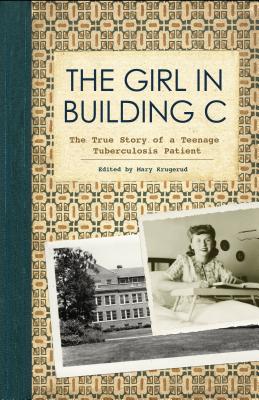
|
|
The Girl in Building C
edited by Mary Krugerud
Our rep from the Minnesota Historical Society Press sent me a copy of this book, saying that I’d want to be aware of it because it’s set in Walker. She was so right—and not just because of the location. Of the books I read for Night In/Morning In, The Girl in Building C touched me the most.
In 1943, a sixteen-year old girl named Marilyn who lived in St. Peter was recovering from what she thought was pneumonia. What she actually had was tuberculosis, and that October, she was sent to Ah-gwah-ching, the state sanatorium outside Walker. So much of this is hard for me to understand. As a parent, I can’t imagine sending my ill child hours away, by herself. And it was during World War II, when both gas and tires were rationed, so trips to see her were infrequent. I also really can’t imagine the time before antibiotics. The protocol for treating TB was bed rest, fresh air, and good nutrition. The latter was often difficult to provide, again because of wartime rationing.
Marilyn thought she’d be at Ah-gwah-ching for a short time. However, by January the TB had spread, and she nearly died. Her recovery took time, and she was at Ah-gwah-ching for nearly three years.
And here’s something else that’s hard to understand: how the TB patients coped with prolonged bed rest at a time when there was no television, no computers, no internet, no texting. One of Marilyn’s coping mechanisms was writing. She wrote nearly daily letters to her parents, as well as letters to other patients at the sanatorium. While Mary Krugerud was researching treatment of TB in Minnesota, she happened upon more than 300 of Marilyn’s letters home. When she looked for someone who might remember Marilyn, she discovered that Marilyn herself was still alive! At 88, Marilyn agreed to be interviewed. The result was a friendship between the two women and this book.
The format of the book is unusual and helpful. Selections from Marilyn’s letters are printed, followed by text from Mary explaining details. It’s a very effective technique.
Marilyn’s lively personality comes through in her letters. As constrained as her life was during her three year stay at Ah-gwah-ching, she lived as fully as she was able. After leaving the sanitorium, she led a full life. She taught, married, raised children.
I found her story inspiring, and I highly recommend it.
|
| |
|
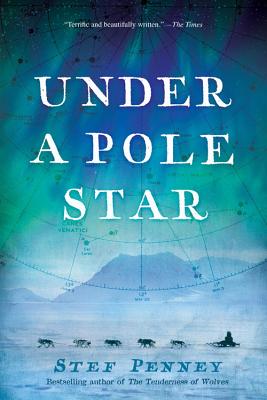
|
|
Under a Pole Star
Stef Penney
A few years ago, I read a book called the Tenderness of Wolves. At its heart was a manhunt across northern Canada in the dead of winter. I liked the book a lot, and I remember thinking nobody does cold as well as Stef Penney! I have the same opinion after reading her latest book, Under a Pole Star.
The book is historical fiction which chronicles exploration in the Arctic Circle, where the frigid weather was in stark contrast with the passions of explorers in search of knowledge, adventure, the North Pole, and fame.
One of these explorers was a woman, Flora Mackie, who first went to the region with her whaler father as a 12 year-old child. As an adult, she headed an English expedition to Greenland. And you can imagine the difficulties a woman in the 1800s faced in mounting such an expedition! Lester Armitage led a rival group of Americans, including the geologist Jakob de Beyn.
Over the next years, the lives of those three people became intertwined—they were rivals, lovers, and competitors. They were in relationship with each other, with the land, and with the Inuit people living in the area. And, as Flora’s father had told her as a child, they were under a pole star. Lives, relationships, and strivings proved to be as fluid and elusive as the unattainable pole star.
It’s a heck of an adventure story, and reads quickly despite being 608 pages long.
|
| |
|
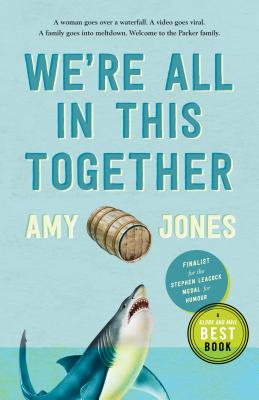
|
|
We’re All in This Together
Amy Jones
You can’t put together a list of books without having one that’s about a dysfunctional family. Right? When Kate went over Ontario’s Kakabeka Falls in a barrel, a video of her ride went viral. Her family—who was in NOTHING together--was stunned. The father only wanted to be on Lake Superior, where he operated a boat service. One daughter reluctantly came home from Duluth, where she’d run away a number of years earlier. Her siblings—a twin who’s also a rival and an adopted brother--react to Kate’s ride in their own ways. The grandkids, too, but to a lesser extent. One granddaughter is in her own world with a marine biologist she met online. She longs to join his hunt for a shark in Lake Superior. Oh, and the brother is married to a realtor whose self-mutilation has gotten worse since she’s been trying to sell a haunted house.
You can see why this group might not be the first choice to deal with a barrel ride by a matriarch who’s showing signs of dementia. Nonetheless, they’re all together over a long week-end while they wait for Kate to regain consciousness and wonder why in the world she did what she did. And what will come next.
As crazy that all sounds, the book is very funny, engaging, and even at times heartwarming. If you’ve ever dealt with odd behavior in your family, or sibling rivalry, you’ll feel right at home in the pages of this book.
The setting is Thunder Bay and Duluth, so it has a Midwestern feel to it. The author is Canadian, and the book was released in Canada three years ago. It was just released in the United States.
You may have met Jason Gobble, the Random House rep who comes to the store to do the summer version of Night In. He’s the person who pressed this book into my hands at our Trade Show last fall. As he talked about it, I thought it would be a great pick for Night In. I hope you agree.
|
| |
|
 |
|
White Houses
Amy Bloom
For a long time, I heard innuendoes that Eleanor Roosevelt had a love affair with a female journalist while she was First Lady. Eventually, that seemed to be accepted as fact. White Houses is historical fiction and it’s about the relationship of Eleanor Roosevelt and journalist Lorena Hickok, told in Hick’s voice. That voice is tough, that of a stereotypical reporter of the 40’s, but unique because it’s a woman’s voice. Hick overcame the grinding poverty of her childhood and after a brief career in the circus—really!—she became a well regarded journalist. Hick covered FDR’s first campaign for the presidency and she and Eleanor fell in love shortly before he was inaugurated. Their relationship compromised Lorena’s ability to objectively cover the new president. In a stunning turn of events, Hick moved into the White House and FDR secured a job in his administration for her. Hick came to admire Roosevelt as a president, and to enjoy his friendship even as she was his rival for his wife.
We’ve all heard that polio left FDR paralyzed, and that this was hidden from the public. It’s hard to imagine that, isn’t it? But that was a different time, and many of the doings of the First Family were private, not covered in the press the way we’re accustomed to. White Houses tells of the vacation Eleanor and Hick took to Maine, driving there in Eleanor’s blue convertible—without being accompanied by the Secret Service, and without the trip being covered by the press.
The characters in the book are complex and multi-dimensional, as are their relationships.
The structure of the book is interesting. It begins after the death of FDR, and continues to circle back to that event. At that point, the passion in Hick and Eleanor’s relationship has been replaced with a deep and abiding love.
Historical fiction raises interesting questions for readers. It is, after all, fiction. What does that mean? Has the author grounded a story in fact and just, perhaps, made up dialogue, or guessed what historical figures were thinking and how they were feeling? I think readers of this book will find themselves considering the relationship between historical fiction and history. And just maybe, wondering how Hick and Eleanor’s relationship would have been covered by the press today. |
| |
|
|
|
|
|
|
|
|
|
|

Ann |
|
 |
|
Onigamiising: Seasons of the Ojibwe Year
Linda LeGarde Grover
Onigamiising is the Ojibwe word for Duluth, the home city of author Linda LeGarde Grover. Onigamiising is a collection of essays, each only a few pages long, which takes readers on a journey through the Ojibwe year. In her essays, Grover reflects on annual events and memories from both the distant and more recent past. A piece recalling summer days doing chores, babysitting, and playing softball in the evening with siblings and kids from the neighborhood might be familiar to many people who came of age in the mid-twentieth century. What makes her writing both different and special is how Grover weaves Ojibwe history and culture, along with the rhythm of the seasons, into each story. Historical injustices such as the Indian boarding schools and the Termination policy are included along with descriptions of traditional clothing, pow wows, family gatherings, and gathering wild rice. Grover's knowledge and appreciation of Ojibwe tradition and culture and of the natural world come through loud and clear. I wanted to take my time and savor each of the beautifully written essays. |
| |
|
|
|
|
|
| |
|
|
|
|

Bob |
|
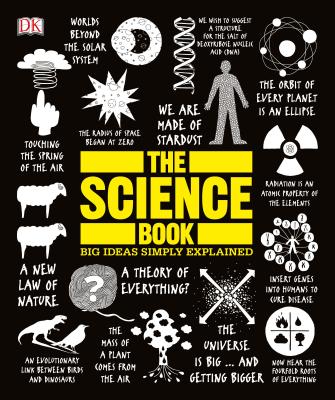 |
|
The Science Book: Big Ideas Simply Explained
Dorling Kindersley
This is a great book! It’s got answers to just about every question a person (I was going to say kid but that would be too limiting) could ask with respect to the development of science. It has a great format with brief discussions on several topics within a particular time frame. Then they move on to another time frame and discuss what’s going on there. Slowly you march through history to modern day science. Starting as early as 585 BCE (Before the Common Era), the book discusses what people were studying in astronomy, biology and so on. Ya know, you can only stand around and look at dirt so long before you have to wonder about it. The book has a nice touch, showing what was being studied and what it meant during each time period. The book has diagrams, pictures and charts, which are easy to understand and accompanied by brief enough narration to keep it interesting. It’s great because you can pick up the book and start reading anywhere, sort of a coffee table book for nerds. Besides a relatively simple format, it has cross-referencing to other parts of the book if you want more information on associated topics.
Check out this book if you’re curious at all. Don’t miss the “String Theory” part near the end. Remember string is not just for wrapping packages anymore. And young adult books aren’t just for kids! |
| |
|
|
|
|
|

Gail |
|
 |
|
|
| |
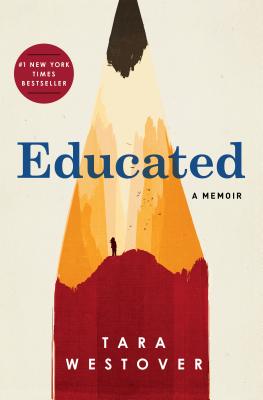
|
|
Educated
Tara Westover
The author was seventeen when she first set foot in a classroom. Her parents were survivalists in the mountains of Idaho. She and her brothers and sister helped prepare for the end of the world by stockpiling food and other necessities. In the summer Tara stewed herbs for her mother, a midwife and healer. In winter she salvaged metal in her father's junkyard. Concussions and burns were treated at home. This is a story of fierce family ties that had to be broken when Tara became "educated". If you liked The Glass Castle you will find Educated even better. This was a "can't put it down book" for me.
Note: Educated was an Indies Introduce title. |
| |
|
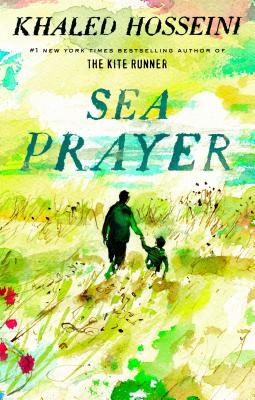
|
|
Sea Prayer
Khaled Hosseini
A father holds his small son, waiting for the boat to arrive. The father recalls his childhood life in Syria before the bombs came. As the sun rises, they look forward to a new home across the sea. The poignant words are accompanied by beautiful illustrations. The proceeds for the book will be donated by the author to help refugees around the world. Khalid Hosseini is best known for The Kite Runner. This will make a beautiful gift book. |
| |
|

|
|
Leopard at the Door
Jennifer McVeigh
This story is set in Kenya and the 1950's during the Mau Mau rebellion. Rachel was raised in Kenya. At the age of 12, her mother died and she was sent to England to school. At 18 she returned to find her beloved Africa was not the same. Her father had a mistress and there was great suspicion between the European colonists and the Africans, and also between the tribes themselves. Who can one trust? This terrific book has lots of action and one wonders what will happen next. |
| |
|
|
|
|
|

Hannah |
|
 |
|
|
|

|
|
Written in My Own Heart’s Blood: Outlander series #8
Diana Gabaldon
Actually, the other reviews here are based on classics I loved in the past. I haven’t been reading anything but the Outlander series for weeks and weeks. Some of these books are more than 1,400 pages long, and there are eight of them. I am in love with these characters, and there is so much suspense and fascinating historic detail… Finishing this book is throwing me into severe culture shock. I won’t know how to get through my days without spending time in Gabaldon’s world.
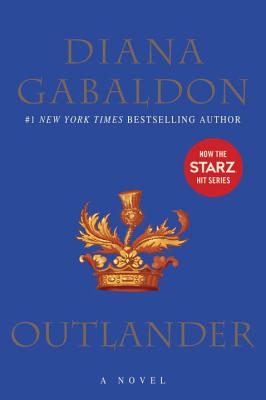 Spoiler Alert: I originally thought of these as women’s books, but there’s so much about piracy and Indians and the American Revolutionary War, I’m recommending it to my brother. Spoiler Alert: I originally thought of these as women’s books, but there’s so much about piracy and Indians and the American Revolutionary War, I’m recommending it to my brother.
Chronology Alert: If you want to take this deep dive into the past, start with Outlander. These books must be read in order.
|
| |
|
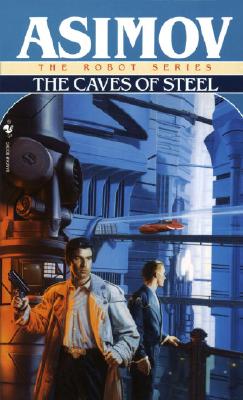
|
|
Caves of Steel
Isaac Asimov
Asimov is the father of robots in modern science fiction. He invented the positronic brain (like Data's in Star Trek: The Next Generation) and established the three rules of robotic law: a law protecting humans, a law requiring obedience to humans, and a law mandating robot self-preservation. In that order: anything that conflicts with a higher law is nullified. I consider Caves of Steel Asimov's masterpiece. I've lost count of how many times I've read this murder mystery that partners a detective with a human-like robot in a future earth where robots are hated.
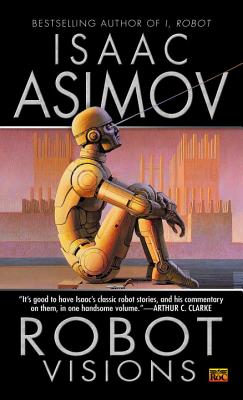 Asimov's Robot Visions is a collection of short stories that play out logical, moral, and human implications of creating artificial intelligence, a timely topic today. (If you casually swear at a robot to "get lost," how can you separate him from the dozens of robots he's hiding among? What if a robot is accidently given the capacity for true creativity? Is it OK to love robots more than other people?) Asimov's Robot Visions is a collection of short stories that play out logical, moral, and human implications of creating artificial intelligence, a timely topic today. (If you casually swear at a robot to "get lost," how can you separate him from the dozens of robots he's hiding among? What if a robot is accidently given the capacity for true creativity? Is it OK to love robots more than other people?)
|
| |
|
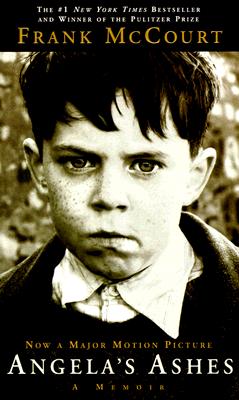
|
|
Angela's Ashes
Frank McCourt
This is a memoir, but it's more like historical fiction as no one could remember the conversations and details included. It's a heartbreaking, inspiring story about McCourt's childhood, mainly in Limerick, with an alcoholic father and a mother struggling to cope with severe poverty and heartbreak. The story is unforgettable, but isn't it the masterful Irish storytelling that makes it exceptional entirely?
|
| |
|
|
|
|
|
| |
|
|
|
|
Would you like to be a guest reviewer?
Email Sally at sally@beagleandwolf.com |
| |
|
|
|
|
|
— page top —
|
|

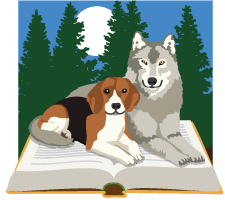

 Jen
Jen



 Sally
Sally

















 Spoiler Alert: I originally thought of these as women’s books, but there’s so much about piracy and Indians and the American Revolutionary War, I’m recommending it to my brother.
Spoiler Alert: I originally thought of these as women’s books, but there’s so much about piracy and Indians and the American Revolutionary War, I’m recommending it to my brother.  Asimov's Robot Visions is a collection of short stories that play out logical, moral, and human implications of creating artificial intelligence, a timely topic today. (If you casually swear at a robot to "get lost," how can you separate him from the dozens of robots he's hiding among? What if a robot is accidently given the capacity for true creativity? Is it OK to love robots more than other people?)
Asimov's Robot Visions is a collection of short stories that play out logical, moral, and human implications of creating artificial intelligence, a timely topic today. (If you casually swear at a robot to "get lost," how can you separate him from the dozens of robots he's hiding among? What if a robot is accidently given the capacity for true creativity? Is it OK to love robots more than other people?)
